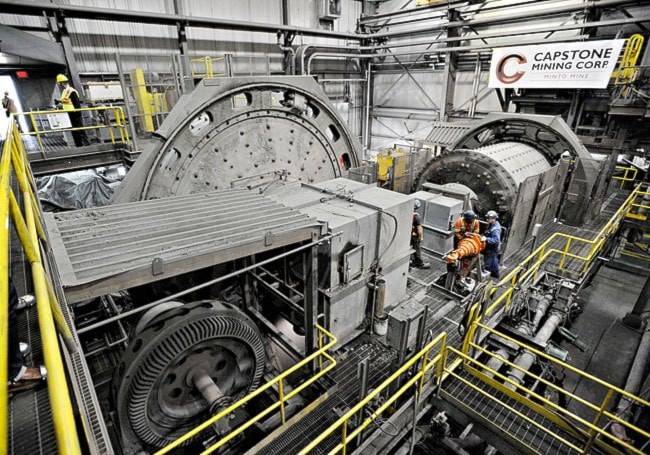Environmental assessments are too tough and getting tougher, according to testimony from the mining industry to a Senate committee last week.
The committee is currently reviewing proposed amendments to the Yukon Environmental and Socio-economic Assessment Act.
“In their view, project proponents are being assessed to death,” said Samson Hartland, executive director of the Yukon Chamber of Mines, in his presentation.
The act was “very progressive when it was first introduced,” he said. However, “we have seen in the last few years a very punitive type of interpretation.”
“Recently, we have seen increasingly complex and more numerous information requests, leading to further delays and increased costs,” said Stuart Schmidt, president of the Klondike Placer Miners’ Association, who also spoke to the committee.
“The overall time required to complete the YESAA process from beginning to end has systematically increased approximately two and a half times, to an estimated 291 days in our current application,” said Clynton Nauman, president of Alexco Resource Corp., which has been through the environmental assessment 10 times now.
The Yukon Environmental and Socio-economic Assessment Board disputes that the overall time to complete an assessment has increased over the years.
Detailed statistics are available on the board’s website. They show no obvious trend of increasing time to complete assessments.
One chart shows that the overall timelines to complete a project have been consistent from 2011 through 2014.
Minor changes to the board’s rules came into effect in late 2010 after consultations with First Nations, the Yukon government and project proponents, said board spokesperson Rob Yeomans.
Those changes increased timelines by only a few days on average, he said.
The board already adheres to strict timelines at each stage of an assessment.
The proposed new legislated timelines would only apply to the overall time that a project spends in front of the board.
At the designated office level, which handles the vast majority of assessments, the bill suggests a maximum time of nine months per assessment.
Currently, the average assessment at that level takes about two months.
The mining industry representatives complained in particular that they are being asked to do more and more at the adequacy review stage, which is when board members determine whether there is enough information in a proposal for the assessment to begin.
“From a proponent’s perspective, the adequacy review should be the adequacy of an application, not necessarily the adequacy of a project,” Hartland told the Senate committee. “There is plenty of time to be able to go through the adequacy of a project and the specific aspects through the assessment process, but increasingly we have seen the continual use of front-end process to fully go through the gamut of a particular application.”
It may be true that assessors are asking for more information up front, said Yeomans with the assessment board.
But that’s because the board has learned over time what information will be necessary to ultimately get the project through permitting, he said.
“We’ve done over 2,000 assessments now, and as you do more and more of those assessments in specific sectors you start to understand what information is required. If you don’t ask for it in adequacy, you know the regulator or DFO or some other party or First Nation, they’re going to be asking for it later.”
When all the information is available at the start, it makes the assessment much more efficient, he said.
“We’d rather have the days on the front end, so we have a complete proposal for the whole process, versus piecemealing and having more public comment. Because every time we get new information we have to go back to everyone that’s participating in the assessment.”
How long a project stays in the adequacy review phase depends on how complete a proposal is when it’s submitted and how quickly a proponent can provide the missing information, he said.
When the federal government consulted with First Nations and the assessment board on the proposed new timelines, the intention was to exclude the adequacy review phase from them.
After consultation with the mining industry, the bill ultimately tabled with the Senate now includes the adequacy phase in overall timelines, but the timelines were not increased to account for the time to get through that process.
The mining industry representatives also told the Senate committee that mining projects are currently being forced to go through reassessment every time there is a minor change to a project.
“What we hear from the proponents is that the threshold is very low for triggers for reassessments,” said Hartland with the Chamber of Mines.
Nauman with Alexco gave the example of adding new deposits to its existing operations at the Bellekeno mine.
“These deposits have the same geology or would be delivered to an already licensed mill, and the potential environmental effects of the additional production would remain unchanged from prior operations,” he said.
“Regardless, development and production from these new deposits, as well as several elements of the already licensed project, were all reassessed.”
Yeomans said the assessment board doesn’t do reassessments.
“In our view they were discussing new proposals they were submitting to us that were tied to an existing project.”
When new activities are proposed that do not fall under an existing licence, they must be reviewed if they are significant enough to trigger an assessment, he said.
The environmental and socio-economic impacts of newly proposed activities cannot be determined until they are assessed, said Yeomans.
The proposed amendments to the legislation do not propose to change the level at which new activities would trigger assessments.
Instead, they would give the decision body (typically the Yukon government) the power to decide if an assessment is required.
The assessment board will not have a chance to discuss these issues with the Senate committee reviewing the proposed amendments.
Last week, a scheduled meeting to hear from the board’s acting chair was cancelled by the committee. That meeting would have taken place today.
Contact Jacqueline Ronson at
jronson@yukon-news.com
